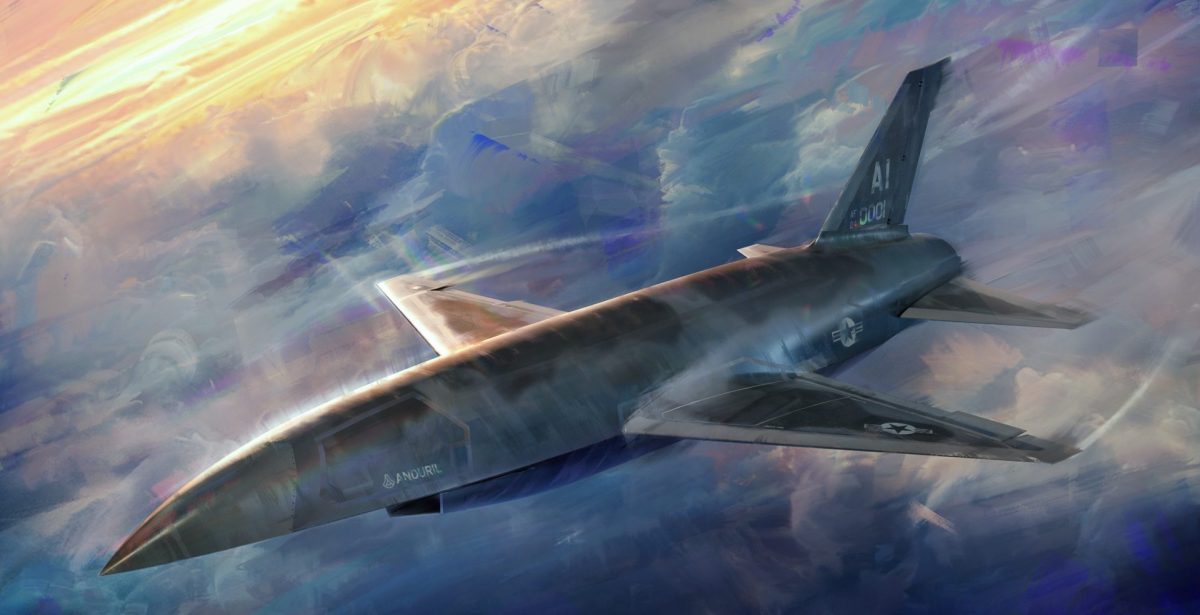Air Force has 5 vendors on contract to develop autonomy for CCA drones

DAYTON, Ohio — The Air Force is currently working with five vendors to build the mission autonomy for the first increment of its collaborative combat aircraft (CCA) platforms, according to a service program executive officer.
The five companies — which are being kept classified for security reasons — recently received contracts to develop the autonomy software that will be integrated into the first batch of the next-generation drones, Brig. Gen. Jason Voorheis, PEO for fighters and advanced aircraft, told reporters Monday at the Air Force Life Cycle Industry Days.
“We have vendor pools that those five are selected from, and there will be a down-select process based on knowledge gained over time as a function of performance of those autonomy vendors,” Voorheis said. “We will get down to a lower number of those vendors, and they will create an autonomy implementation that will be applied to CCA Increment 1.”
The Air Force has previously said it is working with a consortium of around 30 vendors to develop mission autonomy for CCAs, which is part of the family of systems for the service’s Next Generation Air Dominance (NGAD) program. Once fielded, the drones will fly alongside manned aircraft and conduct a range of missions, from intelligence, surveillance and reconnaissance to offensive strike.
The industry consortium has created a government reference architecture based on previous work done by the Air Force Research Laboratory. The architecture establishes baseline interfaces and standards, subsequently allowing the Air Force to hold a separate competition for CCA mission autonomy, Voorheis said.
Although details about what the vendors are specifically doing are being kept behind closed doors, the contract mechanisms being used for autonomy are similar to the process the service is using for the CCA air vehicles, said Col. Timothy Helfrich, director of the Agile Development Office and senior materiel leader of the Advanced Aircraft Division at the Air Force.
“We’ve also built in very specific touch points, where autonomy and aircraft models are being passed back and forth between the autonomy vendors and their vehicle vendors,” Helfrich told DefenseScoop. “And then, the Air Force has an independent way to assess both of those to ensure that they’re working well together.”
In April, Anduril and General Atomics beat out Lockheed Martin, Northrop Grumman and Boeing for the development-for-production phase of CCA Increment 1. The two companies are now gearing up to conduct flight tests of their respective air vehicle designs before a final production decision will be made in 2026, Voorheis said.
A final award for Increment 1 mission autonomy is expected to occur around the same timeframe as the air vehicle, he said.
“We have the flexibility to make them separate contracts,” Helfrich added. “We want to fundamentally sustain as much competition as we can throughout all lifecycles, and so keeping it separate and keeping different vendor pools alive is in line with how we’re funding for CCA.”
Moving forward, the Air Force is honing in on what requirements will be part of CCA Increment 2. The service plans to begin the formal concept design phase for the next batch in fiscal 2025, and it’s looking to open up the program to international partners to be able to collaborate on development, Voorheis said.
At the same time, the service is parsing out what propulsion requirements will be included in that increment. While Anduril and General Atomics are both responsible for the propulsion systems in their drone designs for Increment 1, the Air Force is planning to award a separate contract for detailed prototype studies on propulsion options for CCA Increment 2 and beyond, John Sneden, director of propulsion at the Air Force Life Cycle Management Center, told reporters Monday during another roundtable.
The Air Force released a request for information in 2023 that indicated it was targeting a thrust range of 3,000 to 8,000 pounds of force for the systems, but Sneden emphasized that the final requirements are still being considered. He noted the RFI was intended to survey what the propulsion industry would be able to provide for CCAs, as well as the technology options it could pursue in the three-, five- and seven-year timeframes.
“A lot of our movement has just been really to assess what is in the art of the possible from a propulsion capability perspective,” Sneden said. “We’re not necessarily locked to any specific thrust class right now, and we’re trying to stay open.”



